Coral Spawning: Nature's Underwater Snowstorm Explained
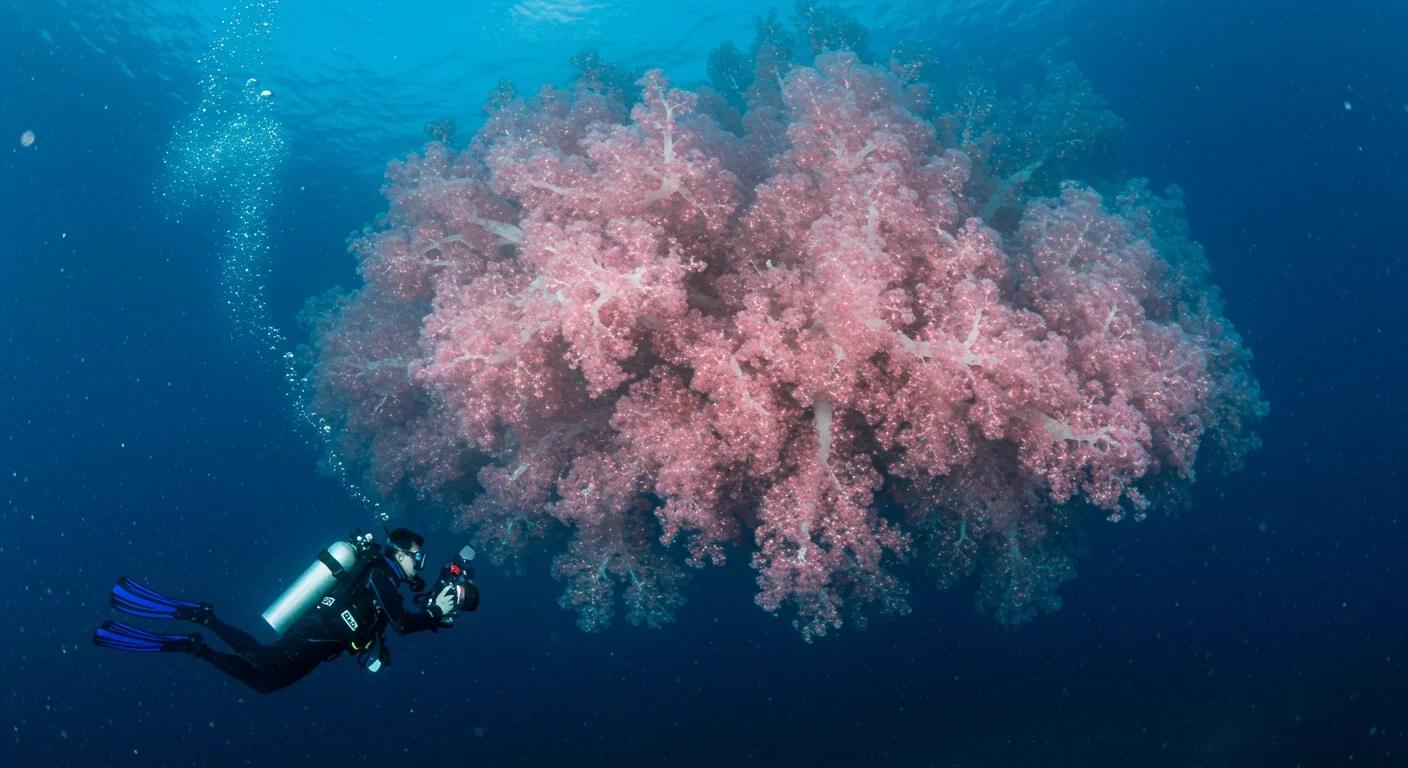
TL;DR: In 2025, AI-powered autonomous underwater vehicles are revolutionizing deep-sea exploration, discovering thousands of new species annually in Earth's last frontier—the ocean depths covering 70% of our planet. While technologies like 6,000-lumen ROVs, underwater gliders, and submersibles capable of diving 8,000+ meters are revealing bioluminescent ecosystems and creatures previously unknown to science, they also enable destructive deep-sea mining that threatens to destroy habitats before we even understand them. The next decade presents a critical choice: will humanity use these breakthrough tools to protect the deep ocean's vital climate-regulating functions, or exploit it into irreversible degradation?
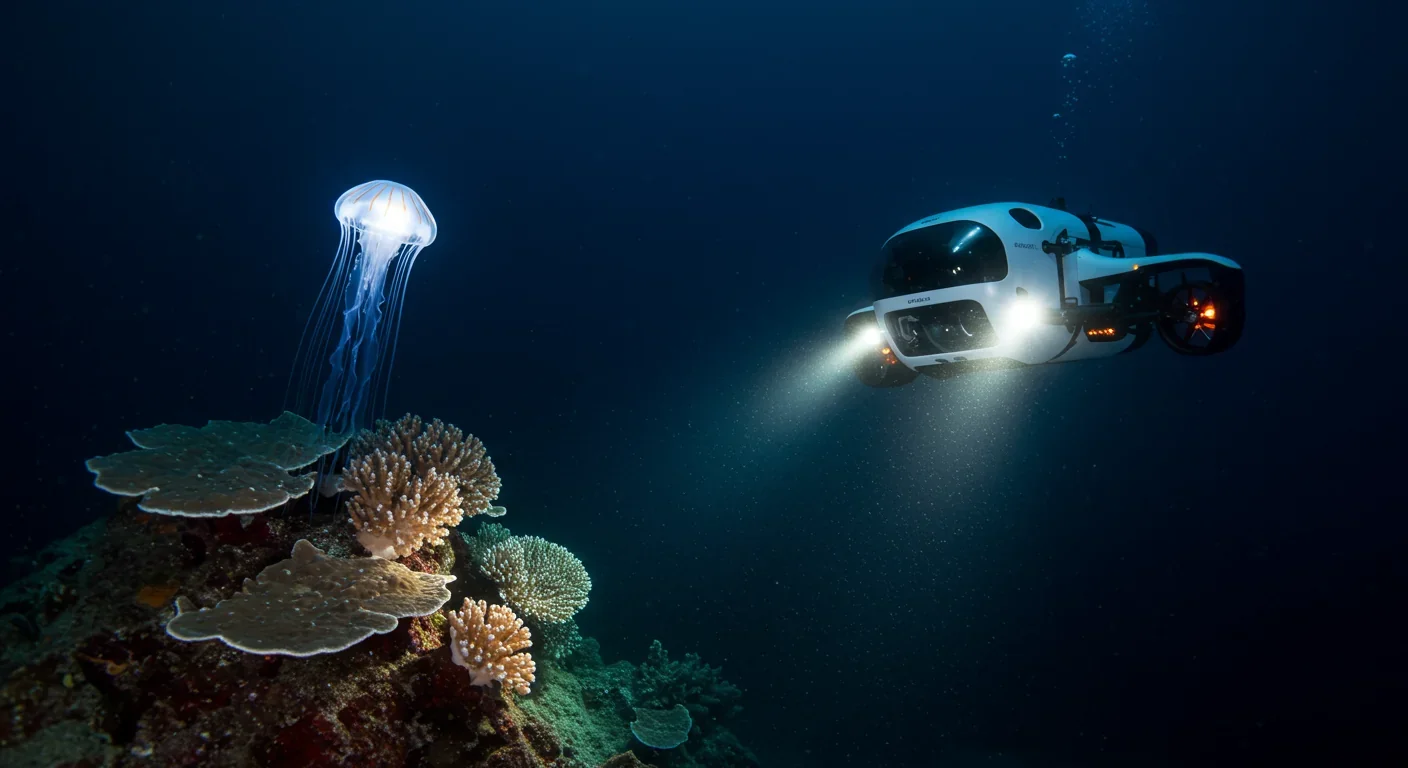
Imagine exploring a realm where 95% remains completely unknown—not on some distant planet, but right here on Earth. The deep sea, covering 70% of our planet's surface, has long been more mysterious than the surface of Mars. But in 2025, a technological revolution is finally illuminating this alien world beneath the waves, revealing ecosystems so bizarre and beautiful they're rewriting our understanding of life itself.
In 2023, scientists discovered over 30 new species in a single deep Pacific expedition—including a fluorescent "Barbie pink" fish and a bizarre "walking sea pig." But these aren't isolated finds. Researchers now discover approximately 2,000 new ocean species every year, a rate that's accelerating dramatically thanks to a convergence of breakthrough technologies.
The game-changer? Autonomous underwater vehicles (AUVs) equipped with artificial intelligence, operating at depths that would instantly crush a human body. These robotic explorers can dive to 6,000 feet and beyond, equipped with 6,000-lumen LED arrays that turn the perpetual darkness into a stage for nature's most spectacular light show. The Qysea Fifish V6 Expert, for instance, uses AI Vision Lock to automatically track subjects against powerful currents, capturing stable 4K footage in conditions that would be impossible for human divers.
What makes this moment extraordinary isn't just the technology—it's the timing. The global underwater drones market has exploded from $5.1 billion in 2024 to a projected $16.7 billion by 2034, representing a 12.8% annual growth rate. This massive investment is democratizing deep-sea exploration, transforming it from an exclusive domain of government agencies into a field where universities, environmental organizations, and even citizen scientists can participate.
The deep sea has always held humanity in equal parts terror and fascination. When the HMS Challenger embarked on the first scientific deep-sea expedition in 1872, naturalists used weighted ropes and dredge nets to blindly scrape the ocean floor, recovering strange creatures that Victorian scientists could barely classify. The expedition took four years to circle the globe and discovered 4,700 new species—an achievement that stood as the gold standard for over a century.
Fast forward to 1960, when Jacques Piccard and Don Walsh descended 35,814 feet into the Mariana Trench in the bathyscaphe Trieste. Their seven-hour journey proved life existed at the deepest point on Earth, but the technology was so primitive they could only spend 20 minutes on the bottom, peering through a single small porthole. The mission cost millions and couldn't be quickly repeated.
The turning point came in the 1980s with remotely operated vehicles (ROVs)—tethered robots that allowed scientists to explore without risking human lives. Yet these early systems required massive support vessels, teams of operators, and budgets that limited expeditions to a handful per year. The 2005 discovery of hydrothermal vents in the Mediterranean took years of preparation and cost millions of dollars.
Today's revolution echoes the transformation brought by the printing press or the telescope—a sudden leap in our ability to observe and understand the world. Just as Galileo's telescope revealed that Jupiter had moons, shattering the geocentric worldview, modern AUVs are revealing that the deep sea isn't a barren wasteland but a thriving metropolis of bizarre life forms.
The heart of this revolution lies in three converging technologies: autonomous navigation, artificial intelligence, and electric propulsion systems that can operate for over 72 hours without human intervention.
Modern AUVs like those deployed by the Monterey Bay Aquarium Research Institute (MBARI) navigate using sophisticated sensor fusion—combining sonar, inertial guidance, and seafloor mapping to build real-time 3D models of their environment. Unlike their tethered ROV cousins, which rely on a physical cable for power and communication, AUVs are truly independent. They follow pre-programmed missions, make autonomous decisions about where to investigate, and surface only when their work is complete.
The AI systems are remarkable. When the Technical University of Munich's diving robot hunts for marine debris, it processes camera and ultrasound data through neural networks trained on over 7,000 labeled images. The AI transforms 2D footage into precise 3D models, allowing its four-fingered gripper—capable of exerting 4,000 Newtons of force—to delicately lift objects weighing up to 551 pounds from depths of 52 feet without crushing fragile glass or plastic.
Electric propulsion represents another quantum leap. Early underwater vehicles used hydraulic systems that were noisy, inefficient, and scared away marine life. Today's brushless DC motors powered by lithium-ion batteries are nearly silent, reducing acoustic disturbances by up to 80%. This matters profoundly in the deep sea, where many creatures rely on sound for navigation, mating, and prey detection. A quieter robot means more natural behavior and better science.
Perhaps most impressive are underwater gliders—AUVs that don't use thrusters at all. Instead, they adjust their buoyancy to rise and sink, using wing-like fins to glide horizontally through the water column. These elegant machines can patrol the ocean for months, collecting temperature, salinity, and pressure data across thousands of square kilometers while consuming minimal power.
Saildrone's Explorer unmanned surface vessels (USVs) complement these underwater systems, offering over 12 months of endurance while conducting high-resolution bathymetric mapping. In one mission, a Surveyor platform mapped 90,000 square kilometers of deep water in the Cayman Islands—work that would have required years of ship time at exponentially higher cost.
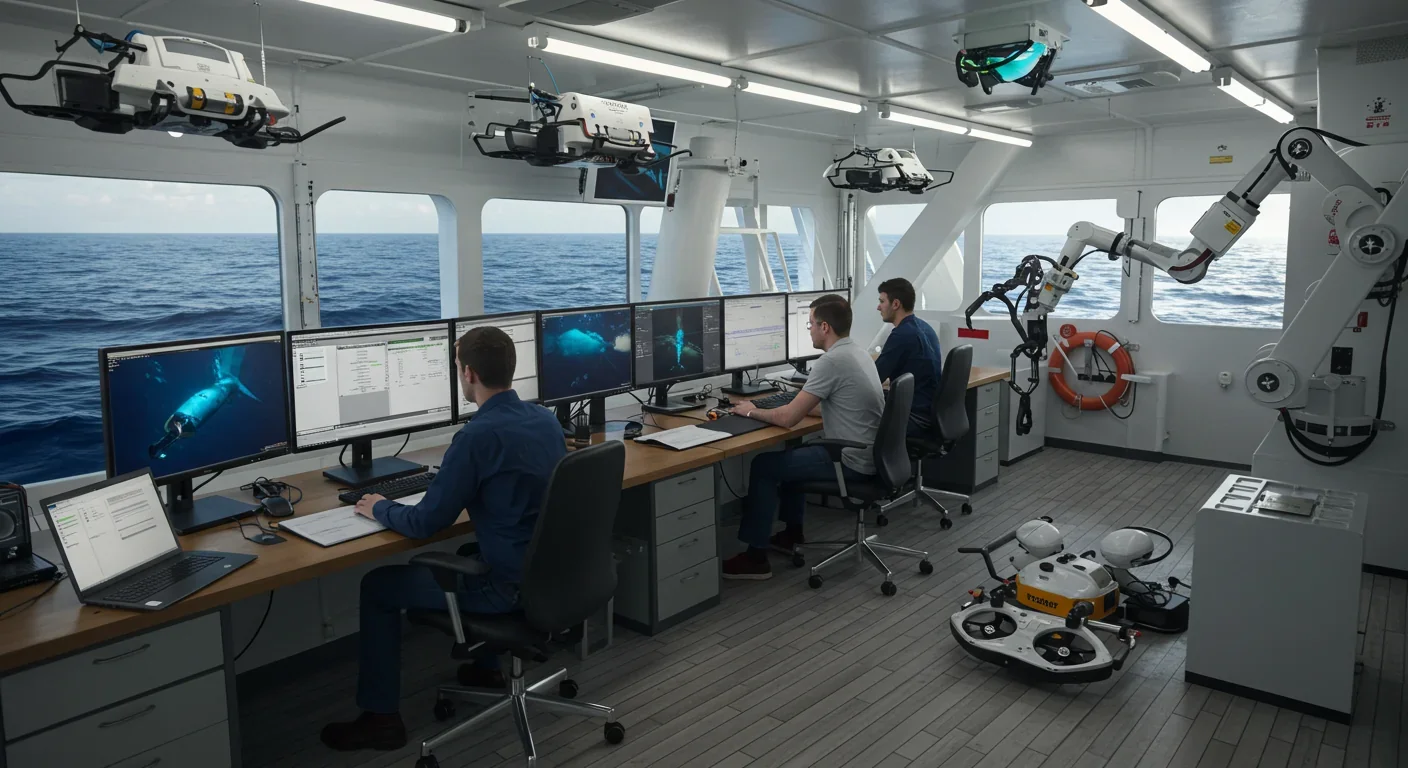
The discoveries emerging from this technological renaissance are rewriting biology textbooks and challenging fundamental assumptions about life.
In 2025, scientists discovered Bathylepeta wadatsumi, a limpet living at 19,430 feet (nearly 6 kilometers) deep—the deepest record for its entire taxonomic group. What makes this extraordinary is that this creature's shallow-water cousins live in tide pools you could wade through. The discovery suggests that evolution can bridge the gap between surface and abyss far more readily than anyone imagined.
The genetic revolution is equally startling. When researchers analyzed mitochondrial DNA from hadal snailfish collected in the Pacific and Indian Oceans, they discovered that species previously thought to be isolated in specific trenches actually have distributions spanning thousands of miles. The genus Notoliparis, long considered distinct, turned out to be synonymous with Pseudoliparis—a finding that's forcing taxonomists to reconsider how we classify deep-sea life.
In just the past decade, 43 new species in the family Liparidae have been described—a discovery rate that suggests we've barely scratched the surface. Dr. Mackenzie Gerringer notes that "Taxonomy is essential for understanding the organisms with whom we share our planet," but in the deep sea, we're still learning the most basic facts about who lives there.
The ecosystems themselves defy expectations. When scientists surveyed the newly discovered Hatiba Mons hydrothermal vent field in the Red Sea, they found fungal communities dominated by Basidiomycota rather than the expected Ascomycota. Even more surprising: terrestrial fungal genera like Coprinus and Polyporales were present, possibly as spores that had drifted from land and somehow established themselves in one of Earth's most extreme environments. These fungi may play crucial roles in metal cycling and nutrient turnover, functions we're only beginning to understand.
Bioluminescence—the ability to produce light—is ubiquitous in the deep sea, serving functions from attracting mates to warning predators. Anglerfish dangle glowing lures to attract prey. Firefly squid coordinate synchronized light displays during mating season. Vampire squid release clouds of glowing mucus when threatened. This chemical light show, powered by luciferin and luciferase reactions, represents an entirely parallel communication system that humans couldn't even detect until we developed the cameras to see it.
This technological revolution is delivering benefits that extend far beyond scientific curiosity.
Climate Regulation: The deep ocean plays a critical but poorly understood role in climate regulation. It absorbs about 30% of human-generated CO₂ and stores it through biological and geological processes. The biological carbon pump—wherein phytoplankton photosynthesize CO₂, die, and sink to the abyss—sequesters billions of tons of carbon annually. New AUV missions are mapping these processes with unprecedented detail, revealing that deep-sea mixing and dissolution of carbonate sediments act as a carbon sink operating over centuries to millennia.
Resource Assessment: As humanity faces critical shortages of rare earth elements essential for smartphones, electric vehicles, and renewable energy, the deep sea has emerged as a potential source. Polymetallic nodules on the abyssal plain contain significant reserves of copper, cobalt, nickel, and rare earths. While controversial, AUVs and ROVs are enabling precise surveys that could make extraction more targeted and less destructive than current proposals.
Pharmaceutical Discoveries: Deep-sea organisms have evolved unique biochemical adaptations to survive crushing pressure, freezing temperatures, and complete darkness. These adaptations are yielding novel compounds with potential medical applications. Enzymes from hydrothermal vent bacteria are already used in research; future discoveries could include new antibiotics, anti-cancer agents, and industrial catalysts.
Real-Time Disaster Monitoring: When scientists deployed seafloor pressure sensors and AI-driven earthquake analysis around the Santorini volcanic complex, they tracked magma ascending from 18 kilometers depth to just 3 kilometers below the seafloor—a feat impossible with traditional methods. This capability could provide early warning for submarine volcanic eruptions and tsunamis, potentially saving thousands of lives.
Democratic Science: Perhaps most transformative is the democratization of exploration. The E/V Nautilus streams ROV dives live on NautilusLive.org, allowing students worldwide to participate in real-time discoveries. In 2024, High Tech High students in San Diego conducted the first-ever student-to-student videoconference between a high school and a research vessel via HiSeasNet satellite internet, asking questions directly to scientists piloting ROVs 4,500 meters below the surface. This telepresence revolution is creating a generation of ocean advocates who've witnessed discoveries firsthand.
Yet this same technology that illuminates the deep sea also threatens to destroy it before we fully understand what's there.
Deep-sea mining looms as the most immediate danger. Mining vehicles crush and remove seafloor sediments and polymetallic nodules, obliterating benthic habitats that support sponges, filter feeders, and countless endemic species specialized to stable conditions. These ecosystems can take decades to centuries to recover—if they ever do.
The extraction process stirs up sediment plumes that disperse over vast areas, smothering animal communities and blocking the feeding mechanisms of filter feeders. These plumes carry toxins and alter water chemistry, threatening species far beyond the immediate mining footprint. Mortality among deep-sea fish and zooplankton unable to escape sends cascading effects up marine food webs, potentially impacting commercial fisheries.
Noise and light pollution from mining machinery disrupt species communication and behavior in the naturally dark and quiet abyss. Many deep-sea animals rely on bioluminescent signals and subtle acoustic cues for reproduction and navigation—artificial light and sound fundamentally alter these processes in ways we barely comprehend.
Perhaps most troubling: we're mining ecosystems we haven't even catalogued. Deep-sea habitats may host millions of species unknown to science. Mining risks extinction of life forms we've never discovered, and no biodiversity offset can compensate for this irreversible loss.
Climate change compounds these threats. Ocean acidification has already dropped the ocean's average pH from 8.2 to 8.1 since the Industrial Revolution—a 30% increase in acidity. Current acidification rates are ten times faster than any natural event in the past 55 million years. This threatens calcifying organisms like corals and mollusks, weakens the biological carbon pump that sequesters CO₂, and shifts carbonate saturation horizons toward the surface, reducing calcification rates throughout the water column.
Regulatory gaps exacerbate these dangers. The International Seabed Authority (ISA) faces a fundamental conflict: it both licenses mining and protects the ocean. Draft exploitation regulations remain under negotiation while countries like Japan, the Cook Islands, Papua New Guinea, and Norway have already approved permits for exploration in their territorial waters. The United States has paused key environmental regulations to fast-track mining projects, potentially increasing risks.
The European Union's Omnibus package has weakened sustainability legislation, potentially accelerating mining in areas without effective safeguards. As environmental reporting standards decline, the water and ecosystem risks from mining intensify at precisely the moment when precaution is most needed.
Different nations and cultures are approaching deep-sea exploration and exploitation with strikingly different philosophies.
China's Systematic Approach: In 2025, the UN approved China's Global Hadal Exploration Program (GHEP), a coordinated international effort bringing together institutions from over 10 countries including New Zealand, Denmark, Germany, and Chile. China's full-depth submersible Fendouzhe (Striver) can descend beyond 8,000 meters to conduct in-situ experiments and collect samples—capabilities that Chilean scientist Osvaldo Ulloa notes exceed those of the U.S. Limiting Factor. This systematic approach emphasizes long-term research infrastructure over quick commercial returns.
Europe's Precautionary Stance: The €9 million MiningImpact3 project, funded by the Joint Programming Initiative Healthy and Productive Seas and Oceans, represents Europe's science-first approach. Over multiple expeditions to the Clarion-Clipperton Zone, researchers are developing "traffic light" threshold systems that indicate when mining activities risk critical ecosystem damage, potentially requiring operations to halt. Digital twin technologies will monitor and regulate activities in real-time—if regulators have the will to enforce them.
Pacific Island Nations' Sovereignty Dilemma: Countries like the Cook Islands face agonizing choices. Their exclusive economic zones contain vast mineral wealth that could transform national economies. Yet their cultures have deep spiritual and subsistence connections to the ocean. The Cook Islands government has prioritized surveying abyssal plain habitats at 4,500-5,500 meters and Manihiki Plateau regions at 1,500-3,800 meters to understand what they'd be sacrificing—an example of trying to balance development with stewardship.
The High Seas Treaty Breakthrough: After 20 years of negotiations, the High Seas Treaty achieved the 60 ratifications needed to enter force in January 2026. Covering nearly two-thirds of the ocean and about half of Earth's surface, the treaty mandates environmental impact assessments for all human activities in international waters—including deep-sea mining, industrial fishing, and scientific research. It creates mechanisms to establish marine protected areas and share benefits from marine genetic resources.
Yet implementation remains uncertain. While the treaty establishes frameworks, enforcement depends on political will. The Deep Sea Conservation Coalition notes that only 43% of Mediterranean seamounts below 1,000 meters and just 5% of seamounts in the Northwest Atlantic Fisheries Organization (NAFO) area are protected from bottom trawling—despite existing commitments. Global treaties mean little without regional enforcement.
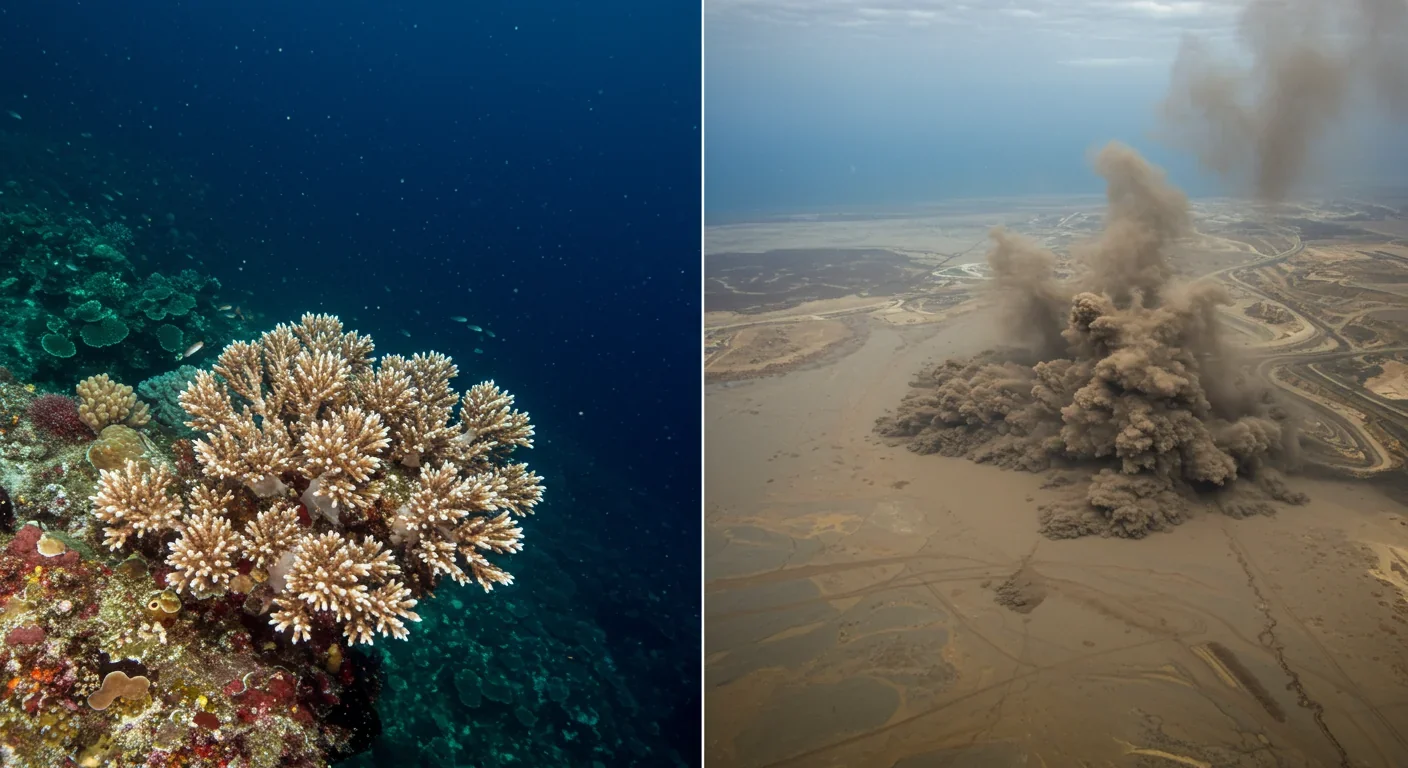
The next decade will determine whether we illuminate the deep sea to understand and protect it, or exploit it into permanent degradation.
For Individuals: Ocean literacy is becoming essential. Understanding that the deep sea provides half our oxygen, absorbs a third of our carbon emissions, and regulates global climate makes abstract environmental concerns immediate and personal. Supporting organizations like the Deep Sea Conservation Coalition, Ocean Exploration Trust, and regional marine research institutions amplifies conservation voices.
For Scientists: The research agenda must shift from pure discovery to impact assessment. Before the first commercial mining operation begins, we need comprehensive baseline studies, long-term monitoring of experimental sites, and validated models of ecosystem recovery. The MiningImpact3 expeditions revisiting disturbed Clarion-Clipperton Zone sites five years after industrial-scale testing will provide crucial evidence—if we have the patience to wait for results before proceeding.
For Technologists: The focus should expand beyond extraction to restoration. Can we develop AUVs that plant deep-sea coral gardens? Design mining systems that truly minimize impacts? Create sensors that detect ecosystem stress before it becomes catastrophic? The same ingenuity that builds 4,000-Newton grippers could build tools for healing rather than harvesting.
For Policymakers: The precautionary principle must guide regulation. The High Seas Treaty's mandatory environmental impact assessments are a start, but we need enforceable standards, transparent monitoring, and the courage to say "no" when science indicates unacceptable risk. The traffic-light threshold systems being developed by MiningImpact3 should become mandatory, with independent oversight to prevent industry capture.
Skills to Develop: The deep-sea workforce of 2035 will need hybrid expertise: marine biology plus data science, engineering plus ecology, policy plus oceanography. Universities should create interdisciplinary programs that break down silos between departments. Remote operation skills—piloting USVs from shore, analyzing real-time data streams, coordinating autonomous vehicle swarms—will become as essential as fieldwork.
We stand at an inflection point eerily similar to the one humanity faced with the atomic bomb. The same knowledge that could power cities could also destroy them. Similarly, the technology revealing the deep sea's wonders also enables their exploitation.
The volcanic cone Nafanua, discovered near Samoa, grew from nothing to 300 meters high in just four years—averaging eight inches per day. Its summit rose from 600 meters depth to 300 meters, creating an entirely new ecosystem that scientists named "Eel City" for the large communities of eels inhabiting its crevices. Within decades, continued growth could make it a navigation hazard, demonstrating that the deep sea is dynamic, not static.
Yet bottom trawling can destroy ancient coral seamounts in minutes, turning millennia-old structures into rubble. As Sian Owen of the Deep Sea Conservation Coalition notes, "entire ecosystems are destroyed in minutes, all in the search for ever-dwindling species." The contrast between creation and destruction has never been starker.
The remotely operated vehicle market is projected to grow from $1.9 billion in 2025 to $3.9 billion by 2035, with deep-sea mining operations accounting for 7-9% of ROV deployment. This represents hundreds of machines poised to explore—or exploit—the abyss.
The question isn't whether we have the technology to access the deep sea. We do. The question is whether we have the wisdom to decide what we do once we get there.
As we peer into the darkness with our robot eyes and illuminate wonders that have existed unseen for millions of years, we must remember: the deep sea isn't a frontier to conquer. It's the foundation of the planetary life-support system we depend on. Every breath we take, every stable climate we enjoy, every fish we eat—all depend on the healthy functioning of ecosystems we're only beginning to understand.
The bioluminescent creatures flashing in the abyss aren't just beautiful oddities. They're our relatives, sharing biochemistry and evolutionary heritage stretching back billions of years. The sediments storing carbon aren't just mud—they're the thermostat regulating Earth's temperature. The species we haven't discovered yet aren't just curiosities—they might hold solutions to problems we haven't even identified.
In 2023, scientists discovered over 30 new species in the deep Pacific. In 2024, a new whale species was found "hiding in plain sight" off Japan. In 2025, the discoveries continue accelerating. Each one expands our sense of what's possible, what's alive, what's worth protecting.
The choice is ours: Will we use our unprecedented technological capabilities to study and safeguard the deep sea? Or will we mine, trawl, and pollute it into a shadow of its current magnificence, realizing too late what we've lost?
The robots are ready. The cameras are recording. The lights are shining into the darkness. What we choose to do with what we find will define us as a species. The deep sea is finally revealing its secrets. The question is whether we're wise enough to deserve them.
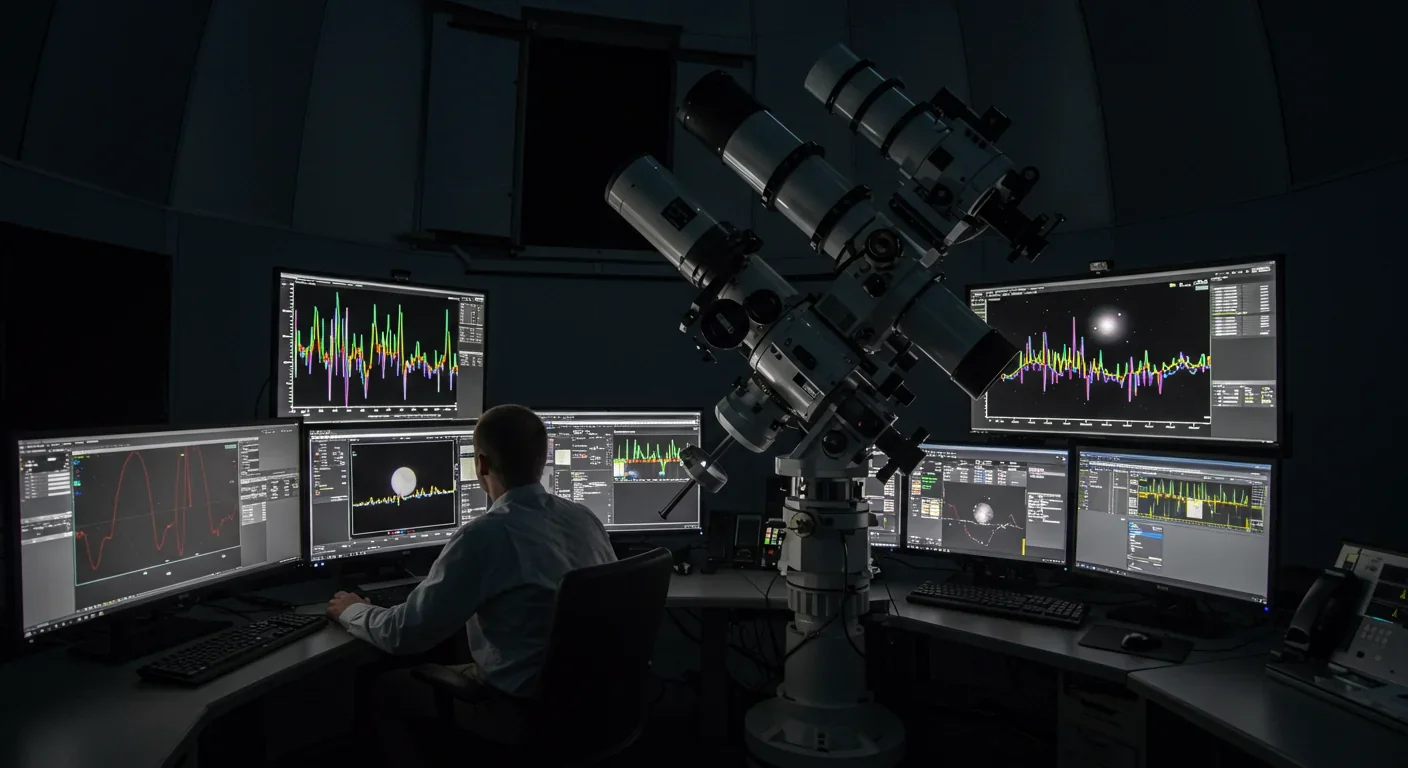
Over 80% of nearby white dwarfs show chemical fingerprints of destroyed planets in their atmospheres—cosmic crime scenes where astronomers perform planetary autopsies using spectroscopy. JWST recently discovered 12 debris disks with unprecedented diversity, from glassy silica dust to hidden planetary graveyards invisible to previous surveys. These stellar remnants offer the only direct measurement of exoplanet interiors, revealing Earth-like rocky worlds, Mercury-like metal-rich cores, and ev...

Hidden mold in homes releases invisible mycotoxins—toxic chemicals that persist long after mold removal, triggering chronic fatigue, brain fog, immune dysfunction, and neurological damage. Up to 50% of buildings harbor mold, yet most mycotoxin exposure goes undetected. Cutting-edge airborne testing, professional remediation, and medical detox protocols can reveal and reverse this silent epidemic, empowering individuals to reclaim their health.

Data centers consumed 415 terawatt-hours of electricity in 2024 and will nearly double that by 2030, driven by AI's insatiable energy appetite. Despite tech giants' renewable pledges, actual emissions are up to 662% higher than reported due to accounting loopholes. A digital pollution tax—similar to Europe's carbon border tariff—could finally force the industry to invest in efficiency technologies like liquid cooling, waste heat recovery, and time-matched renewable power, transforming volunta...

Transactive memory is the invisible system that makes couples, teams, and families smarter together than apart. Psychologist Daniel Wegner discovered in 1985 that our brains delegate knowledge to trusted partners, creating shared memory networks that reduce cognitive load by up to 40%. But these systems are fragile—breaking down when members leave, technology overwhelms, or communication fails. As AI and remote work reshape collaboration, understanding how to intentionally build and maintain ...

Mass coral spawning synchronization is one of nature's most precisely timed events, but climate change threatens to disrupt it. Scientists are responding with selective breeding, controlled laboratory spawning, and automated monitoring to preserve reef ecosystems.

Your smartphone isn't just a tool—it's part of your mind. The extended mind thesis argues that cognition extends beyond your skull into devices, AI assistants, and wearables that store, process, and predict your thoughts. While 79% of Americans now depend on digital devices for memory, this isn't amnesia—it's cognitive evolution. The challenge is designing tools that enhance thinking without hijacking attention or eroding autonomy. From brain-computer interfaces to AI tutors, the future of co...

Transformers revolutionized AI by replacing sequential processing with parallel attention mechanisms. This breakthrough enabled models like GPT and BERT to understand context more deeply while training faster, fundamentally reshaping every domain from language to vision to multimodal AI.